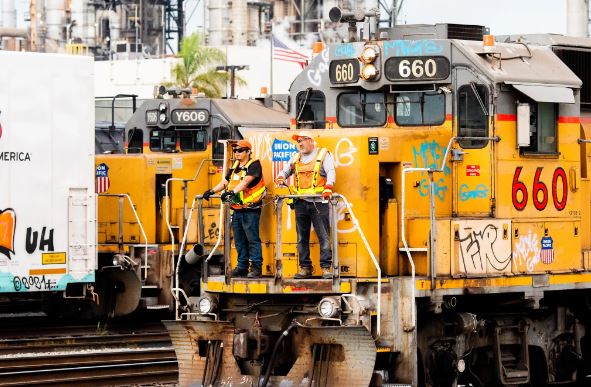In a significant development, the Biden administration announced on Tuesday the implementation of a new rule that will compel the largest freight railroads in the nation to maintain a minimum staffing level of two crew members per train. This move marks the resolution of a longstanding dispute between organized labor and the rail industry over crew size and safety concerns.
Prior to this rule, federal regulations did not specify a minimum crew size for freight trains. However, the majority of the nation’s largest freight railroads traditionally operated with two crew members per train: an engineer and a conductor. The adoption of efficiency measures, such as precision scheduled railroading, had raised fears among workers that rail companies would seek to reduce crews to one person per train as a cost-saving measure.
The Federal Railroad Administration (FRA) proposed the requirement for two-person crews in 2022, citing safety improvements as the primary rationale. The issue gained further attention following a Norfolk Southern freight train derailment in East Palestine, Ohio, last year, which underscored concerns about railroad safety. A bipartisan rail safety bill introduced in response to the derailment included a provision mandating two-person crews, although the legislation has faced obstacles in Congress.
The Norfolk Southern train involved in the derailment had three crew members on board: an engineer, a conductor, and a conductor trainee. Investigators attributed the derailment to an overheated wheel bearing.
Transportation Secretary Pete Buttigieg emphasized the importance of ensuring safe staffing levels on freight trains, particularly given their immense size, some stretching over three miles long. He hailed the new rule as a long-overdue measure that would enhance the safety of workers, passengers, and communities. Buttigieg’s statement underscored the administration’s commitment to prioritizing safety in the transportation sector.
Edward A. Hall, the national president of the Brotherhood of Locomotive Engineers and Trainmen, lauded the administration’s action, highlighting that 11 states already mandated two-person crews. He described the move as a significant step toward improving rail safety nationwide, advocating for a comprehensive approach rather than piecemeal regulations.
The AAR argued that neither the federal government nor unions had provided sufficient evidence linking crew size to safety. The group pointed out that the FRA, during the Trump administration in 2019, had abandoned a similar effort to mandate two-person crews, citing a lack of justification for such a rule.
Ian Jefferies, the chief executive of the Association of American Railroads, criticized the FRA’s decision, labeling it as an unfounded regulation that disregards data-backed solutions for enhancing rail safety. Jefferies expressed concern that the rule could disrupt the collective bargaining process between railroads and labor unions.
The implementation of the rule mandating two-person crews on freight trains reflects the Biden administration’s commitment to prioritizing safety in the transportation sector. While the move has garnered support from labor unions and safety advocates, it has also faced opposition from industry stakeholders who question its necessity and potential impact on collective bargaining dynamics. As the new rule takes effect, its implications for rail safety and labor relations are likely to be closely monitored.

